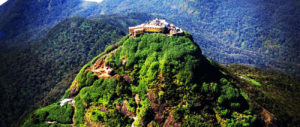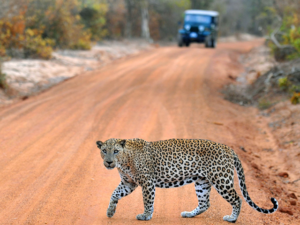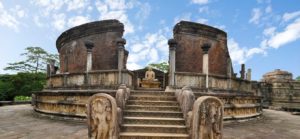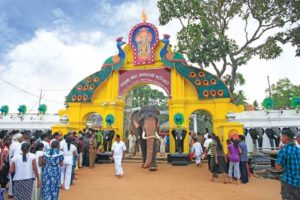When Ceylon became the Republic of Sri Lanka

Team L&M
Today, May 22, in 1972, the island nation of Sri Lanka got its name.
Located about 31 km off the southern coast of India, it was in 1948 that the British colony of Ceylon was granted independence as Ceylon and the nation became a republic within the Commonwealth and its name changed to Sri Lanka.
Not many of you would be knowing that Sri Lanka’s national flag is one of the oldest in the world. A golden lion flag was said to have been brought with the first king of Sri Lanka (Vijaya) from India. The golden lion remained the part of the flag until 1815 when Sri Lanka became British Ceylon where the Union flag of British Ceylon replaced it. The golden lion holding its sword was reintroduced after independence was achieved. The four Bo leaves in the corners replaced spearheads in 1972 and represent four values of the nation; loving-kindness, compassion, equanimity and happiness.
If you happen to be in the island nation, do not miss:
Adam’s Peak that offers the island’s most magical views and happens to be one of Sri Lanka’s foremost pilgrimage sites. The striking pyramid of Adam’s Peak (7,360 ft) has a depression in the rocky summit that resembles a huge footprint which was identified by Buddhists as the Buddha’s footprint, by Hindus as that of Shiva and by Muslims as Adam’s. Later, the Portuguese attributed it to St Thomas the Apostle.
One of the country’s most popular national parks, Yala National Park has a protected area of nearly 130,000 hectares of land consisting of light forests, scrubs, grasslands, tanks and lagoons. Situated in Sri Lanka’s south-east hugging the panoramic Indian Ocean, Yala is home to 44 varieties of mammal and 215 bird species. Among its famous residents are leopards, majestic elephants, sloth bears, sambars, jackals, spotted deer, peacocks and crocodiles.
Polonnaruwa is the island’s finest collection of ancient Sinhalese art and architecture. The second most ancient of Sri Lanka’s kingdoms, Polonnaruwa was first declared the capital city by King Vijayabahu I who defeated the Chola invaders in 1070 to reunite the country once more under a local leader. Declared a world heritage site, Polonnaruwa remains one of the best planned archaeological relic cities, standing testimony to the kingdom’s first rulers.
Make sure you climb the towering outcrop of Sigiriya that is home to the fascinating remains of one of the island’s former capitals, complete with ancient graffiti and elaborate water gardens. An ancient rock fortress, this site was selected as his new capital by King Kasyapa (477-495 CE). So, on a small plateau about halfway up the side of this rock, he built a gateway in the form of an enormous lion. It was used as a Buddhist monastery until the 14th century.
The pilgrimage town of Kataragama is sacred to Hindus, Muslims, Buddhists and indigenous Vedda people of Sri Lanka. A shrine dedicated to Skanda Kumara, the Kataragama temple, dots Kataragama. Another major attraction is Kiri Vehera Buddhist stupa which is believed to be built by the regional king Mahasena in the 6th century. You can join the crowds thronging to the colourful nightly temple ceremonies in this remote pilgrimage town.






